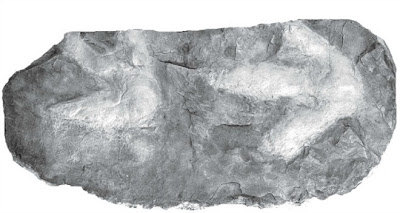Diatryma – slow-walking herbivore
Illustration: http://marlinpeterson.com/portfolio/illustrations/
Abstract
Tridactyl bird footprints preserved in Lower Eocene sandstone of the Chuckanut Formation in Whatcom County, Washington, USA, were made by a species of giant ground bird that walked along the subtropical lowland riverbank. The morphology and age of the tracks suggest the track maker was Diatryma (? = Gastornis). Although these birds have long been considered to be predators or scavengers, the absence of raptor-like claws supports earlier suggestions that they were herbivores. The Chuckanut tracks are herein named as Rivavipes giganteus ichnogenus and ichnospecies nov., inferred to belong to the extinct family Gastornithidae.
Keywords: Chuckanut Formation; Diatryma; Gastornis; ichnofossils
Eocene Big Bird Not so Scary, After All | @WiredScience http://www.wired.com/wiredscience/2012/11/eocene-big-bird-not-so-scary-after-all/
Diatryma – Scientist Postulate that this “Terror Bird” may not Have Been So Terrible
Mustoe, G., Tucker, D., Kemplin, K. 2012. Giant Eocene bird footprints from northwest Washington, USA. Palaeontology. 55, 6: 1293-1305 DOI: 10.1111/j.1475-4983.2012.01195.x


